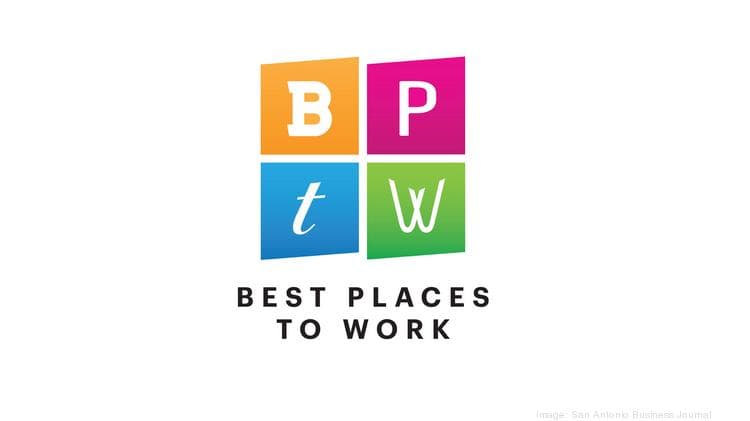The IRS offers several programs designed to give individuals tax advantages to offset health care costs including health savings accounts (HSAs) and health flexible spending arrangements (FSAs).
“Both a healthcare flexible spending account and a health savings account can cut your taxes and help you save money on medical, dental, vision and other qualified medical expenses. And while they are alike in some ways, each offers different features and benefits,” writes Kemberley Washington in Forbes Advisor.
Fidelity says that while both HSAs and FSAs help you save for qualified medical expenses, it is important to understand the differences between them.
“HSAs may offer higher contribution limits and allow you to carry funds forward, but you’re only eligible if you’re enrolled in an HSA-eligible health plan,” explained Fidelity. “FSAs have lower contribution limits and generally you can’t carry over funds.”
Three major differences between FSAs and HSAs, according to Fidelity are:
- You can carry over unused HSA funds: Unlike FSAs, which are generally “use it or lose it”, HSA funds can be carried over making them useful for building savings to pay for large, future medical expenses.
- You can invest the money in your HSA: Unlike FSA funds, HSA funds can be invested so you can take advantage of compound interest and build up a large financial recourse for medical expenses in the future, especially when you reach age 65 and older.
- Whether you can open an FSA depends on your employer; eligibility to open an HSA is determined by your health insurance: Anyone can contribute to an FSA if their employer offers the benefit. HSAs require enrollment in an HSA-eligible health plan and not have other disqualifying health coverage.
IRS Makes Changes in 2023 to HSAs and FSAs
The IRS made changes to both the HSA and FSA program for the 2023 tax year.
“Among the biggest changes for 2023 concern two tax-advantaged health savings accounts: Flexible Spending Accounts (FSA) and Health Savings Accounts (HSA),” reported CBS News in November. “These accounts can save workers a nice chunk of change by allowing them to sock away pre-tax money to pay for medical expenses. Basically, you save what you would have paid in taxes on money you put in the accounts.”
CBS said some of the biggest changes were:
- In 2023, employees can put away as much as $3,050 in an FSA, an increase of about 7 percent from the current tax year’s cap of $2,850.
- Single workers who want to fund an HSA can save up to $3,850 next year, a 5.5 percent increase from 2022, while families can save up to $7,750, up 6.2 percent.
“Those increases are helpful at a time when inflation is at its highest in four decades, with consumer prices having jumped more than 8 percent from a year ago. But there are several “gotchas” that workers need to be aware of, especially when it comes to Flexible Spending Accounts, with the foremost being that FSAs are “use-it-or-lose-it” programs. In other words, if you don’t use all the money you set aside, you’ll lose it — your employer keeps any unused funds,” said CBS News.
While the next opportunity to enroll in an FSA happens during the annual open enrollment period in the fall, employees eligible for an HSA can sign up anytime.
“HSAs generally have more flexibility than FSAs. For instance, unused funds roll over each year, unlike with an FSA, where funds are forfeited if not used by your employer’s claim deadline. And you can change your contributions to your HSA at any time; with an FSA, contributions are set during open enrollment,” said CBS News.
Understanding Health Savings Accounts (HSAs)
A health savings account (HSA) is a tax-exempt trust or custodial account you set up with a qualified HSA trustee to pay or reimburse certain medical expenses you incur.
Some of the benefits, according to the IRS, of an HSA:
- You can claim a tax deduction for contributions you, or someone other than your employer, make to your HSA even if you don’t itemize your deductions on Schedule A (Form 1040).
- Contributions to your HSA made by your employer (including contributions made through a cafeteria plan) may be excluded from your gross income.
- The contributions remain in your account until you use them.
- The interest or other earnings on the assets in the account are tax-free.
- Distributions may be tax-free if you pay qualified medical expenses.
- An HSA is “portable.” It stays with you if you change employers or leave the workforce.
To be eligible to qualify for an HSA contribution, an individual must meet the following requirements:
- You are covered under a high deductible health plan (HDHP).
- You have no other health coverage except what is permitted under “other health coverage” such as disability, dental care, vision care and long-term care insurance.
- You aren’t enrolled in Medicare.
- You can’t be claimed as a dependent on someone else’s 2022 tax return.
HDHPs have a higher annual deductible than typical health plans and a maximum limit on the sum of the annual deductible and out-of-pocket medical expenses that you must pay for covered expenses. Out-of-pocket expenses included copayments and other amounts, but don’t include premiums.
For 2023, the minimum annual deductible for HDHPs is $1,500 for self-only coverage (an increase from $1,400 in 2022) and $3,000 (an increase from $2,800 in 2022).
For 2023, the maximum annual deductible and other out-of-pocket expenses for HDHPs is $7,500 for self-only coverage (an increase from $7,050 in 2022) and $15,000 for family coverage (an increase from $14,100 in 2022).
Each year the IRS sets the maximum that individuals can contribute to an HSA.
For 2023 the HSA contribution limits are:
- $3,850 for self-only coverage (up from $3,650 in 2022)
- $7,750 for family coverage (up from $7,300 in 2022)
- Those 55 and older can contribute an additional $1,000 as a catch-up contribution
The HSA contribution limits include amounts contributed by your employer, if any.
2023 HSA and FSA Examples of What You Can Use the Funds For
While HSA and FSA plan participants should consult their plan document for confirmation of reimbursable expenses under their plans, some common IRS-qualified medical expenses include:
- Acupuncture
- Ambulance
- Chiropractor
- Crutches
- Doctor’s office visits and co-pays
- Drug prescriptions
- Flu shots
- Hearing aids
- Insulin
- Lab fees
- Medical records charges
- Midwife
- Over-the-counter medicines and drugs
- Personal protective equipment
- Physical therapy
- Psychiatric care
- Special education expenses
- Speech therapy
- Surgery (excluding cosmetic surgery)
- Vaccines
- Wheelchair
Understanding Health Flexible Spending Arrangements (FSAs)
Health FSAs are employer-established benefit plans that may be offered in conjunction with other employer-provided benefits as part of a cafeteria plan. Employers have flexibility to offer various combinations of benefits in designing their plans.
The IRS says that self-employed persons aren’t eligible for FSAs.
Here is how FSAs work:
- You contribute to your FSA by electing an amount to be voluntarily withheld from your pay by your employer. This is sometimes called a “salary reduction agreement.” The employer may also contribute to your FSA if specified in the plan.
- You don’t pay federal income tax or employment taxes on the salary you contribute or the amounts your employer contributes to the FSA. However, contributions made by your employer to provide coverage for long-term care insurance must be included in income.
- At the beginning of the plan year, you must designate how much you want to contribute. Then, your employer will deduct amounts periodically (generally, every payday) in accordance with your annual election. You can change or revoke your election only if specifically allowed by law and the plan.
- Generally, contributed amounts that aren’t spent by the end of the plan year are forfeited.
- Generally, distributions from a health FSA must be paid only to reimburse you for qualified medical expenses you incurred during the period of coverage.
- You must be able to receive the maximum amount of reimbursement (the amount you have elected to contribute for the year) at any time during the coverage period, regardless of the amount you have contributed.
- The maximum amount you can receive tax free is the total amount you elected to contribute to the health FSA for the year.
- You must provide the health FSA with a written statement from an independent third party stating that the medical expense has been incurred and the amount of the expense.
“FSAs are generally “use-it-or-lose-it” plans. This means that amounts in the account at the end of the plan year can’t generally be carried over to the next year. However, the plan can provide for either a grace period or a carryover,’ says the IRS.
A plan may allow either a 2 ½ month grace period or a rollover amount up to $610 in 2023.
There are also Dependent Care FSAs (used to pay for eligible dependent care services such as preschool, summer day camp, before and after school programs, and child or adult daycare) with a 2023 maximum of $2,500 for those married filing separately and $5,000 for single or married filing jointly.






